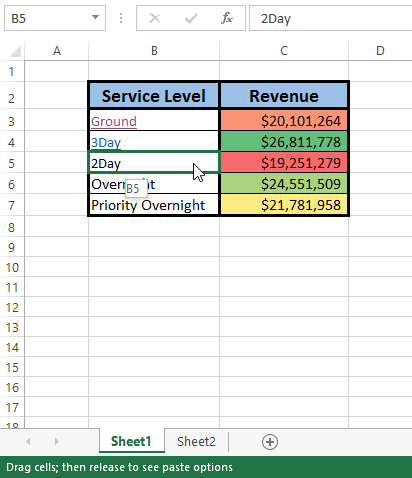5 Ways to Link Excel Cells from Another Sheet Easily

Linking Excel cells across different sheets can significantly enhance your productivity by streamlining data management. Whether you're tracking project updates, financial data, or just keeping personal records, knowing how to link cells can save time and reduce the likelihood of errors. Here's how you can link cells from another sheet in Excel in five easy ways.
1. Using Direct Cell Reference

The most straightforward method to link cells from another sheet is by directly referencing them:
- Select the cell where you want the linked data to appear.
- Type an equal sign (=).
- Switch to the sheet containing the data you want to link, click on the cell you need.
- Press Enter.
The formula will look something like =Sheet1!A1. Here, Sheet1 is the name of the sheet you're pulling data from, and A1 is the cell reference.
🔎 Note: Ensure the sheet name does not have spaces; if it does, use single quotes around it (e.g., ='Sheet With Spaces'!A1).
2. Linking with Name Manager

Using Excel's Name Manager to define names for cell ranges can simplify your cell references, especially in complex spreadsheets:
- Go to Formulas > Name Manager.
- Create a new name by clicking New, then give it a name and point it to the desired range in another sheet.
- Back in your working sheet, use the name in your formula like
=MyNamedRange.
This method is particularly useful when you plan to reference the same cell or range frequently from multiple places.
3. Excel's Paste Link Feature

Paste Link is a quick method for creating links without needing to manually enter formulas:
- Select the data in the source sheet you want to link.
- Copy it (CTRL+C).
- Right-click on the destination cell in the other sheet and choose Paste Link or Paste Special, then select Paste Link.
This pastes the values as formulas, linking to the original cell.
4. Using External References

If you need to link data from an entirely different workbook, external references are key:
- With both workbooks open, type the formula
=[WorkbookName]SheetName!CellReference, replacingWorkbookNamewith the name of the file you are linking from,SheetNamewith the sheet name, andCellReferencewith the cell you're linking to. - Press Enter, and Excel will create an external reference.
Remember, this reference will need both workbooks open to update.
5. VLOOKUP Function for More Complex Linking

VLOOKUP can link data when you need to match cells based on a key value:
- Use the VLOOKUP function to look up values from another sheet.
- The formula will look like
=VLOOKUP(lookup_value, [lookup_sheet_name]!lookup_range, col_index, [range_lookup]).
VLOOKUP is ideal for when you're working with tabular data, allowing you to dynamically update links based on changing criteria.
In summary, linking cells in Excel from another sheet can range from simple direct references to more complex functions like VLOOKUP. Each method has its place, depending on your project's complexity and the level of dynamic interaction you need between your sheets. Understanding these techniques can transform the way you work with data in Excel, making it more efficient and less error-prone.
What happens if the source sheet is deleted?

+
If you delete the source sheet where the linked data resides, the links will result in #REF! errors in the destination sheet, indicating a broken link.
Can I link data from multiple sheets at once?

+
Yes, you can. You can use a combination of functions like VLOOKUP or INDIRECT to create dynamic links that pull data from multiple sheets based on criteria or specific conditions.
How do I update linked data automatically?

+
Excel updates linked data automatically whenever changes are made to the source data. However, if you’re linking to an external workbook, ensure both are open for real-time updates. For external links, you might need to refresh the data by hitting F9 or refreshing manually.



